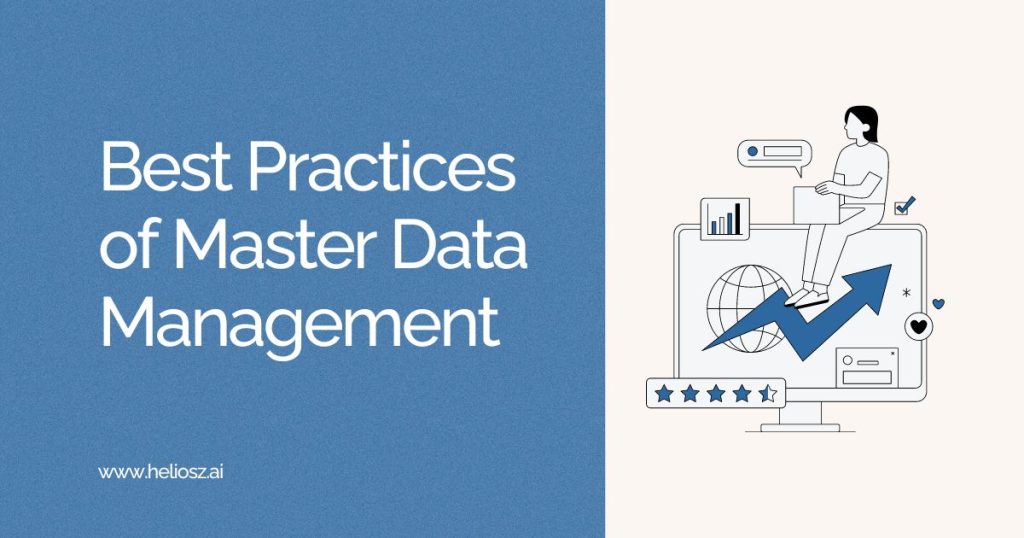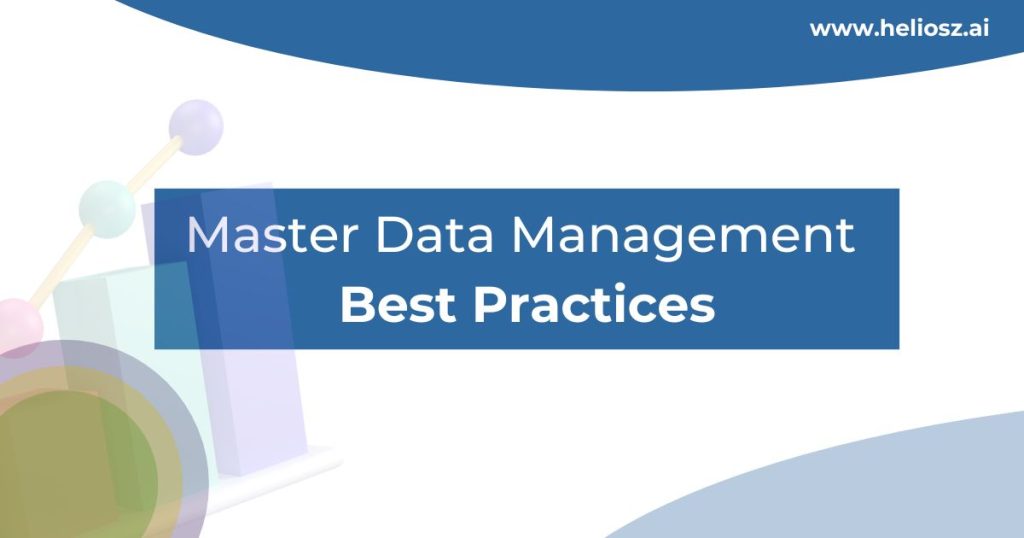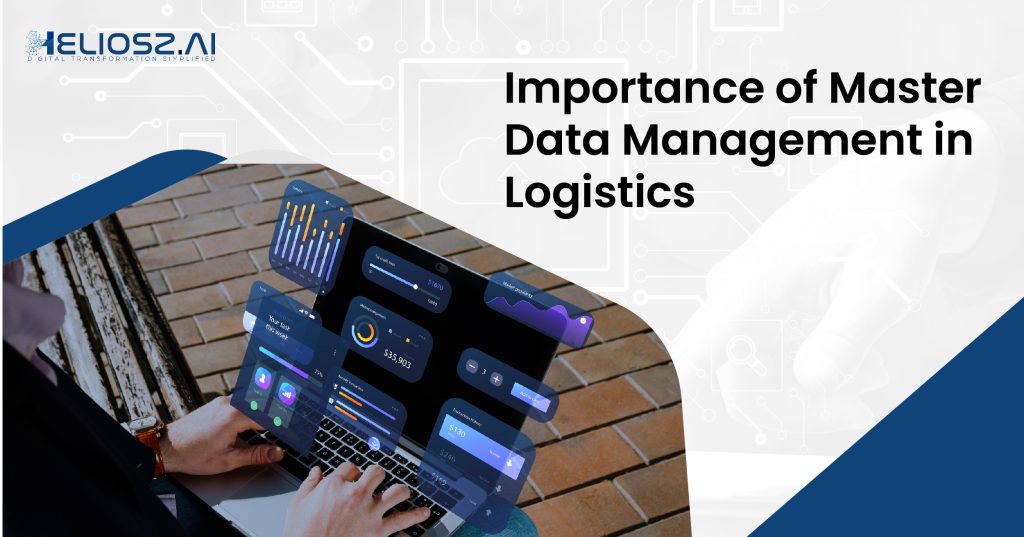
Every business is drowning in a sea of information and anticipating a mega data explosion shortly. Master Data Management helps to save huge for business and make better business decisions.
Customer details, product descriptions, supplier contracts, finance information, transactional details – the list goes on as Master data management examples. The only smart way to tackle this is Master Data Management. Businesses identify that poor data management can become fragmented, inconsistent, and unreliable, leading to poor decision-making and missed opportunities. This is where Master Data Management (MDM) steps in.
MDM is a strategic approach to creating a single source of truth for your core business entities, ensuring data consistency and accessibility across the organization. In this informative guide, we will discuss these important questions and topics that can allow you to optimize your data management effectively.
Consider this article as a roadmap to the intriguing world of customer master data management strategy.
In this article, we will learn about,
- Master Data Management Definition: You Need to Know
- Master data Management Best Practices
- The Benefits of Using MDM Best Practices
- Master Data Management Process Improvement
- How Can Heliosz.ai Help you with Master Data Management Process
What is Master Data Management?
Master Data Management (MDM) is a systematic approach to managing and maintaining the core datasets of an organization, serving as the cornerstone of its operations.
Master Data Management can also be defined as the methodical approach to ensure the enhancement of data governance throughout the organization.
MDM is completely reigned by the concept of “Master Data” which consists of applications, products, and services within an organization.
These vital data pools include,
- Customer Information
- Product Directory
- Financial Transactions
- Survey Details
- Supplier Records
and any data that represents significant operations of every business entity.
The primary objective of MDM is to guarantee precision, consistency, reliability, accountability, and governance of critical data.
MDM focuses on developing a single, accurate, and accountable “golden record” for each business entity, eliminating incorrections and fostering data stewardship.
This golden record serves as the primary source of data across the organization, leading to informed decisions and streamlined operations.
9 Important Master Data Management Best Practices

Being committed to intelligent MDM practices will empower the consolidation of master data and create a single source of data for the centralized process of every business entity.
Here are the top 9 master data management best practices that you need to focus on for a successful MDM strategy.
- Establishing a Robust Data Governance Framework
- Maintaining High Data Quality Management
- Implement Centralized Data Storage
- Define Data Ownership and Stewardship
- Adopt Standardized Data Formats and Terminology
- Execute Data Security Measures
- Ensure Comprehensive Data Lifecycle Management
- Facilitate Data Integration and Interoperability
- Leverage Data Governance Tools and Technologies
Now, let’s delve into each strategy extensively to ensure you grasp how to fine-tune the master data management approach for making impactful business decisions.
Establishing a Robust Data Governance Framework
Building a potent data governance framework will act as a guiding structure for managing the data assets of an organization. This will define policies, processes, methods, maintenance, access control, roles, and responsibilities related to data management.
Additionally, this practice will outline the data definitions, ownership, and stewardship to ensure the data quality. Along with mitigating risks associated with data usage, unauthorized access, and data breaches, it will also ensure consistency and accountability across the organization.
Furthermore, the framework promotes collaboration and communication across data management stakeholders, allowing for more informed decisions and proactive risk management.
Setting High Data Quality Management
One of the key MDM practices is to set high standards for data quality management.
This step prioritizes meticulous data cleaning, standardization, and data validation to ensure precision and consistency. To set high data quality management, organizations should execute robust data processing tools, streamlined processes, and methods.
Focus on critical processes and important data sets to minimize human errors and enhance overall data quality. High-quality data will boost operational efficiency and serve as the backbone for crucial decision-making processes.
Implement Centralized Data Storage
Consolidation of master data into an integrated storage system will enable businesses to establish a single and authoritative source of data ecosystem.
This centralized data storage system will guarantee that all departments and systems throughout the organization will leverage unified up-to-date datasets.
By implementing this process, organizations can eliminate the complexities of unorganized data silos, conflict and duplication of data across various platforms, and data explosion risks.
Define Data Ownership and Stewardship
Data should be maintained and managed with the utmost standards of quality and accuracy across all domains.
Defining data ownership and stewardship refers to the process of delineating the clear responsibilities and accountability of a specific set of master data to certain custodians. They will be responsible for the maintenance, precision, usability, and reliability of their designated data sets.
Adopt Standardized Data Formats and Terminology
Standardized data formats and terminologies will ensure consistency and uniformity across the data landscape of an organization. This will drive seamless integration and interpretation.
By setting standard data formats such as currency formats, output units, name capitalizations, date formats, phone numbers, etc, businesses can eliminate ambiguity and confusion.
Clear data terminology will enable everyone who is handling and discussing data to speak the same data language. This practice simplifies the collaboration efforts and data integration processes across various systems.
Execute Data Security Measures
It is important to safeguard your master data from unauthorized access, data breaches, cyber-attacks, and corruption or thefts.
Organizations should adopt multi-level secured data security measures to ensure the protection of master data. It will start from encryption techniques to unreadable data rendering to unauthorized users.
Serious focus should be maintained on defining access controls such as who can access, edit, and delete specific data elements.
Multi-factor authentications, identity verifications, data masking techniques, regular security audits, installation of malware protection, and strict access controls are the top essential data security measures.
Ensure Comprehensive Data Lifecycle Management
This master data management practice involves the entire set of data management processes from creation to disposal.
Organizations should invest heavily in techniques and processes for the stages of the data cycle including generation, storage, processing, analysis, deployment, archival, destruction, etc.
This practice ensures that data is effectively managed throughout its lifespan, addressing regulatory compliance, data quality, and storage optimization.
Facilitate Data Integration and Interoperability
One of the vital best practices in Master Data Management (MDM) is to enable seamless data integration and interoperability across the organization. This strategy will allow various applications and systems to access master data and leverage it for functioning.
ETL (Extract, Transform, Load) method, APIs (Application Programming Interfaces), middleware, connectors, and standard protocols are a few data integration and interoperability methods commonly used in the realm of master data governance.
When different departments and systems can access and share consistent, up-to-date master data, it streamlines processes, reduces errors, and improves overall agility.
Leverage Data Governance Tools and Technologies
Implementing tools and technologies for Master Data management and data governance will empower multiple processes involved in MDM strategy. This practice will ensure streamlined processes, enhanced data quality, and automation of many MDM workflows.
Leveraging advanced tools and technologies will reduce manual efforts, lead to the minimization of errors, and eliminate the risk of inconsistencies in master data.
Atlan, IBM, Collibra, Informatica, Alation, etc are some popular data governance tools available in the data market.
The Top 10 Benefits of Using MDM Best Practices in Master Data Management

Execution of Master Data Management best practices is a powerful business strategy that yields many transformative benefits for organizations.
Here we will have a full scoop on the advantages of a well-defined MDM strategy which will teach you the worth of investing in it.
- Improved data accuracy and consistency
- Enhanced decision-making
- Streamlined business operations
- Reduced data silos and duplication
- Enhanced data security and compliance
- Increased customer satisfaction and retention
- Optimized IT resource utilization
- Facilitated business growth and innovation
- Enhanced data interoperability
- Considerable cost savings
How can the Master Data Management Process be Improved?
- Reduce manual efforts and ensure high standards of data quality by automating data integration and cleaning processes.
- Leverage clear policies, responsibilities, stewardship, and roles to adhere to evolving business needs to strengthen data management frameworks.
- Implement advanced analytical tools and machine learning algorithms.
- Establish real-time data processing systems to make certain master data is always accurate and up to date.
- Formulate key quality metrics and KPIs to evaluate the completeness, precision, consistency, and timeliness of master data.
- Opt for MDM solutions that can confront the advancements in data management systems and changing integration requirements.
- Conduct consistent audits, reviews, and analysis of Master Data Management processes and data quality.
- Enforce strict data security measures to safeguard the master data.
- Invest in continuous training and education programs on master data management practices, tools, technologies, latest techniques, etc. for internal teams.
- Stay updated with industry trends in MDM to evaluate new tools and strategies for continuous improvement and competitiveness.
How Can Heliosz.ai Help you with Master Data Management Process
Heliosz.ai offers a full suite of database management solutions for organizations to craft the master data management process.
We leverage cutting-edge artificial intelligence methodologies and advanced technologies for BPM. We help you keep your master data accurate, compliant, secure, accountable, reliable, and consistent throughout the data lifecycle.
What’s next for getting started with Heliosz.ai?
- Click here for quick access! This link will redirect you to a contact page.
- Please complete the contact form by providing essential details and include a message specifying the reason for reaching out to our expert team.
- After submitting your request, our team will contact you for further discussion.
- We will demonstrate how our platform can transform your MDM processes.


